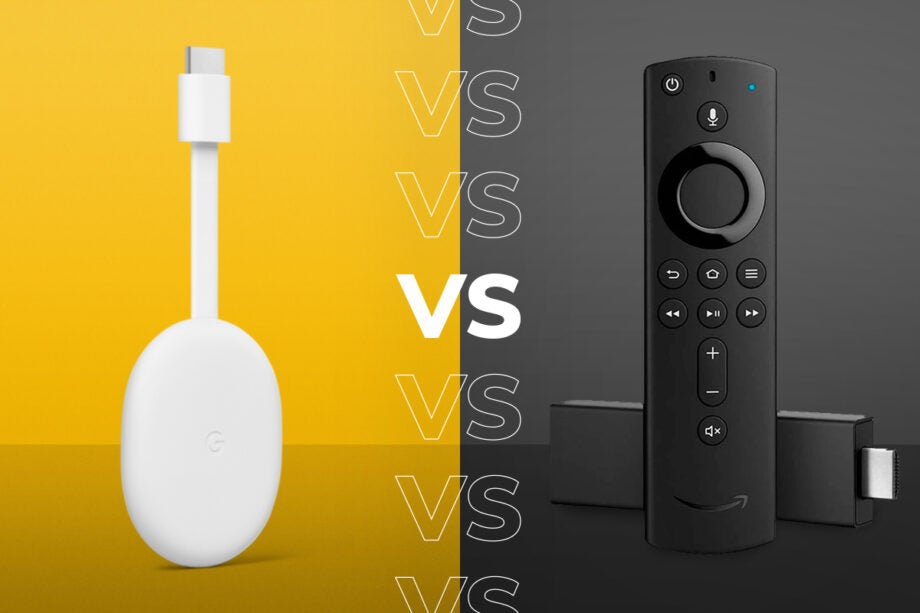Chromecast with Google TV vs Fire TV Stick: They have a lot in common

Google has finally unveiled its first true upgrade to the Chromecast in many moons. But with Amazon having lifted the lid on its latest Fire TV Stick 2020 mere weeks ago, many avid buyers have been left wondering how the new Chromecast with Google TV compares.
Here to help answer that key question, we’ve created this guide comparing the two streaming devices’ key specs and features.
The two have very similar features
On paper, the Chromecast with Google TV and Fire TV Stick 2020 are very similar devices. For non-techies, they’re dinky dongles that plug into the back of your TV and add a number of smart features, chief of which is the ability to stream TV and movies from compatible services using streamlined UIs or your phone/tablet.
However, up close there are a few differences. For starters, they have fairly different form factors. The Chromecast features a pebble-shaped design and custom controller that grants access to Google’s new “TV” service. This is a little different to Fire TV, which has a rectangular design and uses a different Fire UI.
We’ve not used Google TV before, but it’s being pitched as a single pane of glass service that lets you search through content from every service you’re subscribed to in one place. This means you’ll be able to see what’s available on Disney Plus, Netflix, ITV, My 5, YouTube and any other service you’re subscribed to in one place, without having to switch between apps.
Amazon’s Fire TV has a similar UI, but pushes Amazon Prime services to the forefront.. It will also show TV shows and movies that aren’t included with Prime, or require extra subscriptions. In our experience this has been a minor annoyance as it’s all too easy to click on a show you want to watch thinking it’s included only to find you have to pay extra.
The two also have slightly different physical remotes included with the dongles. Google’s remote features a shortcut button to the firm’s Assistant digital butler, while the Fire TV control grants access to Alexa. Both controls feature voice command support and come with inbuilt mics.
And are set to get gaming upgrades in the future
At launch, neither dongle will be able to stream games from their maker’s respective game streaming services. Specifically, you’ll only be able to stream games from Google Stadia on the new Chromecast and Amazon’s Fire TV Stick won’t work with Luna until later this year.
Google and Amazon have both confirmed plans to change this in the near future, however. For non-techies, Stadia and Luna are new subscription services that let you stream triple-A games over the cloud, removing the need to have an expensive gaming PC or console.
But picture quality is slightly different
Both streaming dongles offer impressive image quality, though the Chromecast TV with Google TV has a slight edge on the basic Fire TV Stick. The Chromecast is the only one of the two to support 4K streaming at 60fps and Dolby Vision HDR. The Fire TV Stick meanwhile only supports 1080p streaming at 60fps. The Amazon Stick does support the HDR10, HDR10+ and broadcast HLG standards, however. For 4K support from Amazon, you have to upgrade to the more expensive Fire Stick 4K (£49.99).
Related: How to find HDR content on Netflix and Amazon Prime
That said, the Fire TV Stick is cheaper than the Chromecast with Google TV. The Amazon stick is set to retail for a modest £39.99, while Google’s new Chromecast will sell for a more premium £59.99 when it launches later this year.


